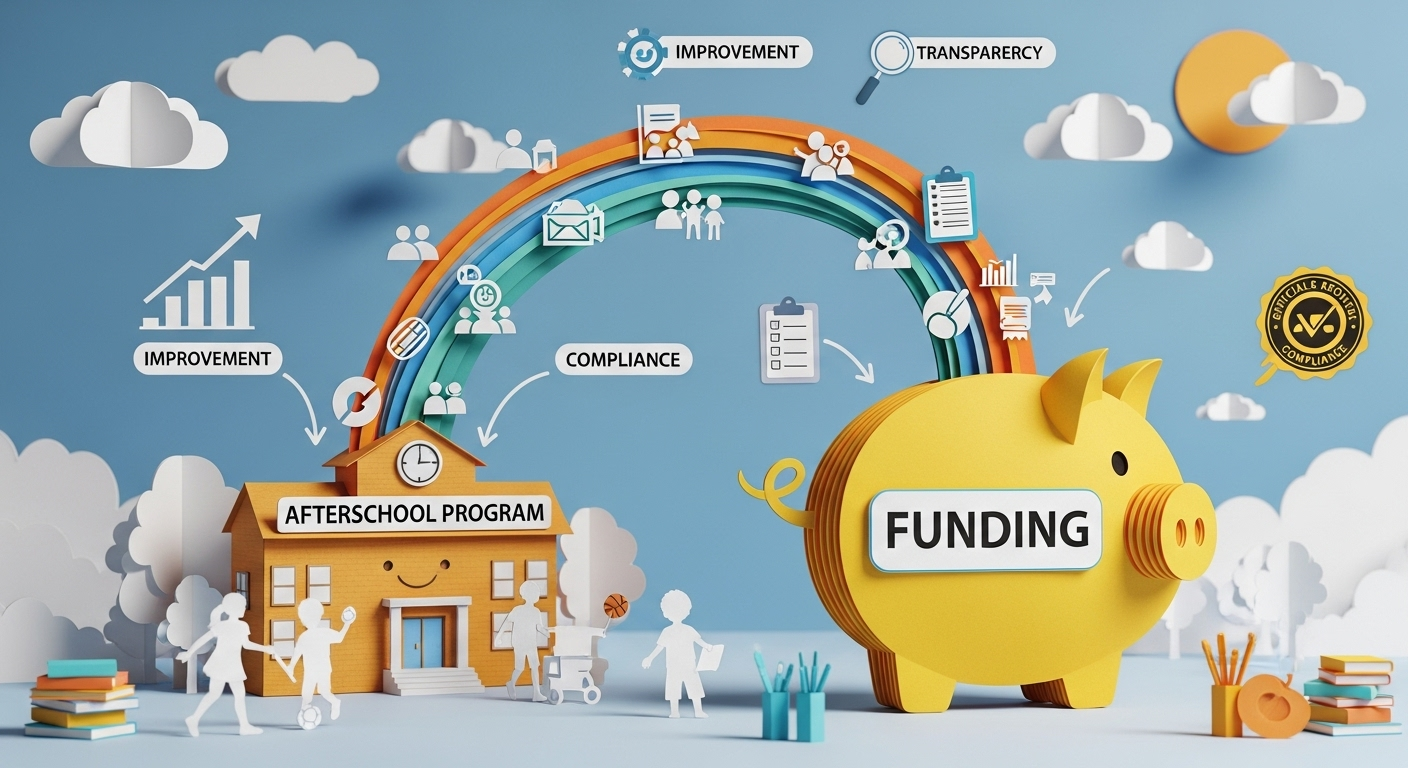
What Afterschool Programs Need to Know About CALPADS
What Afterschool Programs Need to Know About CALPADS
The California Longitudinal Pupil Achievement Data System, commonly known as CALPADS, is a crucial component of California's educational framework. It stores detailed information about students, such as demographics, coursework, assessment outcomes, and participation in specialized programs. Understanding CALPADS is essential for administrators of afterschool and expanded learning programs because accurate reporting ensures compliance and secures essential funding. Programs impacted include the Expanded Learning Opportunities Program (ELOP), After School Education and Safety (ASES ), and 21st Century Community Learning Centers (21st CCLC). While the system may seem complex initially, gaining clarity on its requirements significantly eases the administrative burden and directly supports student success.
Importance of CALPADS Reporting
CALPADS reporting is not just a compliance requirement—it's a strategic tool for afterschool programs. Accurate data submission ensures continued eligibility for state and federal funding streams. For ELOP programs, proper reporting directly impacts funding calculations based on Average Daily Attendance (ADA) and unduplicated pupil counts. Similarly, ASES and 21st CCLC programs rely on CALPADS data to demonstrate compliance with participation and demographic requirements.
Beyond funding, CALPADS data supports program evaluation and improvement. By analyzing student participation patterns, demographics, and outcomes, program administrators can make informed decisions about service delivery, staffing, and resource allocation. This data-driven approach enhances program effectiveness and demonstrates impact to stakeholders, including school boards, community partners, and funding agencies.
Key Data Elements for Afterschool Programs
Afterschool programs must understand which data elements are critical for CALPADS reporting. Student demographic information forms the foundation, including basic identifiers, enrollment status, and program eligibility indicators such as Free and Reduced-Price Meal (FRPM) status. This demographic data directly influences funding calculations and compliance reporting.
Program participation data represents another crucial element. The Student Program (SPRG) file captures when students enroll in and exit afterschool programs, using specific education program codes for ELOP, ASES, and 21st CCLC. Accurate start and end dates ensure proper reporting of program participation and support funding justification.
Attendance data, while not directly submitted to CALPADS as a separate file, underpins many reporting requirements. Daily attendance tracking supports ELOP funding calculations and ASES compliance reporting. Maintaining accurate attendance records throughout the year ensures data integrity when aggregated participation information is submitted through CALPADS.
Available Resources and Support
The California Department of Education (CDE) provides extensive resources to support CALPADS reporting. The official CALPADS website offers comprehensive documentation, including file specifications, data guides, and code sets. These resources are regularly updated to reflect changes in reporting requirements and system functionality.
Training opportunities are available through multiple channels. CALPADS webinars address specific topics and seasonal requirements, while regional meetings provide opportunities for direct interaction with CDE staff. The California School Information Services (CSIS) offers additional support through training sessions, documentation, and technical assistance.
To further assist LEA (Local Educational Agency) staff, the CDE offers various supportive resources and training options. CALPADS Listservs deliver direct notifications about system updates and critical announcements. Regional update meetings give administrators valuable opportunities to interact directly with experts and clarify uncertainties about reporting requirements.
Additional support comes from the California School Information Services (CSIS), which aids schools in accurately preparing data submissions. Self-paced learning resources like the CSIS YouTube Channel and the Bridge Learning Management System offer modules, webinars, and recorded sessions focused on specific submission types. Engaging regularly with these resources helps administrators stay informed, implement best practices, and minimize reporting errors.
Establishing Efficient Data Management
Effective CALPADS reporting begins with robust data management practices. Implementing systematic data collection procedures ensures accuracy and completeness throughout the reporting cycle. Digital registration systems can capture student information directly from families, reducing manual data entry and associated errors.
Integration between afterschool program management systems and district Student Information Systems (SIS) streamlines data flow and maintains consistency. Automated synchronization reduces duplicate data entry while ensuring that program participation information aligns with official student records. This integration is particularly important for maintaining accurate enrollment and demographic data.
Regular data validation procedures help identify and correct errors before they impact CALPADS submissions. Establishing monthly or quarterly data review cycles allows programs to address discrepancies proactively rather than during critical reporting periods. Training staff on proper data entry procedures and the importance of data quality creates a culture of accuracy that supports successful CALPADS reporting.
Compliance and Best Practices
Maintaining CALPADS compliance requires understanding both technical requirements and reporting timelines. The End-of-Year (EOY) submission windows are critical periods when afterschool program participation data must be accurately reported. Preparing for these submissions throughout the year, rather than scrambling at deadline time, ensures better data quality and reduces stress.
Documentation and record-keeping support both compliance and audit readiness. Maintaining clear records of student enrollment, program participation, and attendance provides the foundation for accurate CALPADS reporting. These records also support program evaluation efforts and demonstrate accountability to funding agencies.
Staff training and ongoing professional development ensure that team members understand their roles in the CALPADS reporting process. Regular updates on system changes, new requirements, and best practices help maintain reporting accuracy and efficiency. Investing in staff knowledge pays dividends in improved data quality and reduced reporting errors.
Looking Forward: Maximizing CALPADS Benefits
While CALPADS reporting may initially seem like a compliance burden, forward-thinking programs recognize its value as a strategic tool. The data collected and reported through CALPADS can inform program improvement efforts, support grant applications, and demonstrate impact to stakeholders.
By establishing efficient data management systems and maintaining accurate records, afterschool programs position themselves for success in both compliance and program quality. The investment in proper CALPADS reporting practices pays dividends through sustained funding, improved program operations, and enhanced student outcomes.
Understanding CALPADS requirements and implementing effective reporting practices ensures that afterschool programs can focus on their primary mission: providing high-quality educational opportunities that support student success. With proper systems in place, CALPADS becomes a tool that supports rather than hinders program operations.






